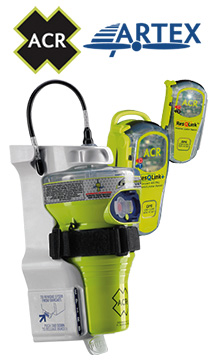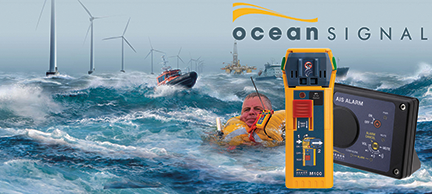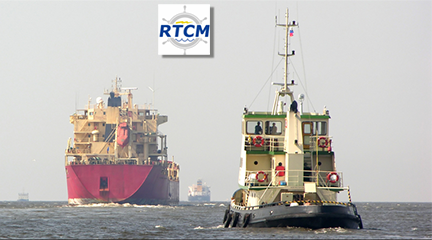
ACR Electronics, Inc. and Ocean Signal are highlighting to commercial owners and operators how the life-saving capabilities of the company's distress beacons, including their Category 1 automatically-deployed, float-free EPIRBs, are significantly enhanced due to Cospas-Sarsat’s next-generation, MEO Search and Rescue (MEOSAR) system. The update in technology means that the importance of including an EPIRB for the vessel and PLBs for crew within the on-board safety equipment will increase as the new Cospas-Sarsat system reaches full operational capacity in the next few years.

Revolutionizing the search and rescue process, 24 EU-launched Galileo navigation satellites will carry second generation SAR transponders for the Cospas-Sarsat system at MEO altitude to supplement the existing LEOSAR (Low Earth Orbit) and GEOSAR (Geostationary Orbit) systems. The increased number of satellites offers much faster signal detection, greater location accuracy, strengthened coverage and greater reliability to improve alerting times for distress beacon owners in emergency situations.
All ACR Electronics and Ocean Signal beacons, including the ACR Globalize V4 and GlobalFIX Pro and iPro EPIRBs, the ACR ResQLink PLBs, plus the Ocean Signal SafeSea E100 and E100G EPIRBs, rescueME EPIRB1 and rescueME PLB1, are compatible with the next-gen satellites, ensuring they will offer the near instantaneous signal detection and transmission enabled by the global MEOSAR satellite transponders and upgraded ground-station components.
For commercial vessels that require a float-free EPIRB that automatically deploys and activates when submerged in water, the ACR Electronics GlobalFIX V4 and GlobalFIX Pro, and Ocean Signal SafeSea 100G float-free EPIRBs feature Category 1 hydrostatic release brackets or housing options. ACR and Ocean Signal EPIRBs are reliable, innovative, compact and user-friendly with exceptional battery lives, and feature robust internal GPS to fix the exact location of the vessel in distress within 110 to 120 meters accuracy. The coordinates are then transmitted via a 406MHz distress signal to search and rescue authorities, with a 121.5MHz homing signal further guiding searchers to the position.
Estimates indicate that when using the next-gen network, anyone activating a GPS-enabled ACR or Ocean Signal EPIRB or PLB can expect their beacon to be located within 100 meters (328 feet), 95 percent of the time, within five minutes of the distress signal, instead of requiring as much as the one to two hours that is typical with the current LEOSAR and GEOSAR system.
When complete, there will be 72 MEOSAR satellites positioned at MEO altitude, more than six times the number of existing satellites in orbit. MEOSAR relays more beacon signals to ground stations using a technique known as ‘bent pipe,’ which is an average of 46 minutes faster than LEOSAR. The network of ground stations, called MEOLUTs (Local User Terminals), along with multiple antenna systems, results in close to 100 percent reliability and near instantaneous global coverage.
The first rescues demonstrating near real-time signal detection using a MEOSAR satellite have already been documented, with the new Cospas-Sarsat system expected to reach full operational capability in 2020-21.

Chris Hoffman, Chairman of the RTCM (Radio Technical Commission for Maritime Services) Board of Directors and chair of the RTCM Special Committee SC110 on Emergency Beacons, said that as the representative of beacon manufacturers within the Cospas-Sarsat community, the company works closely with companies such as ACR and Ocean Signal to ensure that the needs of end users are taken into account when developing these new systems and enhancements. He noted that the new MEOSAR network is poised to have a huge impact on search and rescue and will ultimately result in more lives saved. In the light of this ground-breaking update in technology, RTCM wants to ensure that anyone who spends time at sea is aware of the development and the value it adds to beacons, so they can make an informed decision about why they should carry an EPIRB and a PLB.

